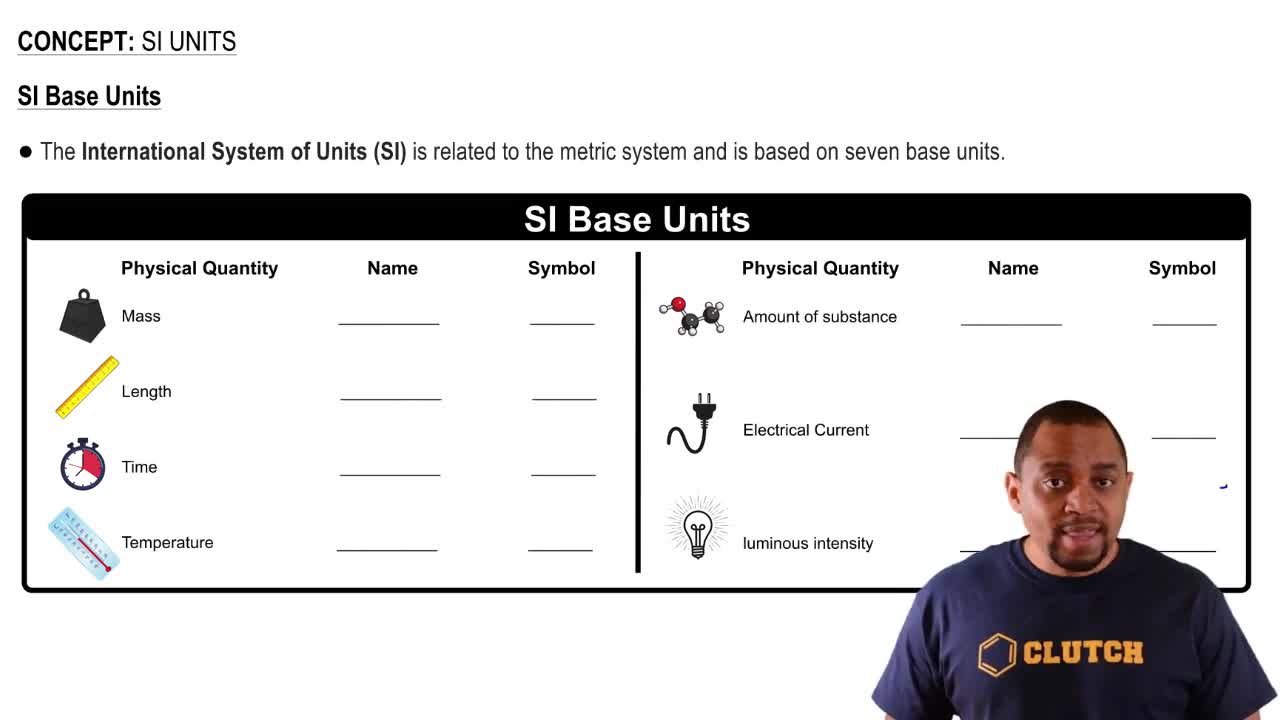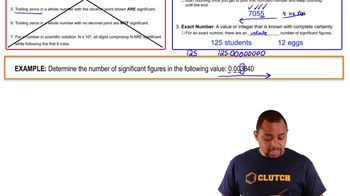Here are the essential concepts you must grasp in order to answer the question correctly.
SI Units
The International System of Units (SI) is the standard system of measurement used in science and engineering. It includes base units such as meters for length, kilograms for mass, and seconds for time. Understanding SI units is crucial for converting measurements from one system to another, ensuring consistency and accuracy in scientific communication.
Recommended video:
Significant Figures
Significant figures are the digits in a number that contribute to its precision. This includes all non-zero digits, any zeros between significant digits, and trailing zeros in the decimal portion. When converting measurements, it is important to maintain the correct number of significant figures to reflect the precision of the original measurement.
Recommended video:
Significant Figures Example
Unit Conversion
Unit conversion is the process of converting a quantity expressed in one set of units to another set of units. This often involves using conversion factors, which are ratios that express how many of one unit are equivalent to another. In this case, converting cubic yards to cubic meters requires knowing the appropriate conversion factor to ensure the result is accurate and in SI units.
Recommended video:
 Verified step by step guidance
Verified step by step guidance


